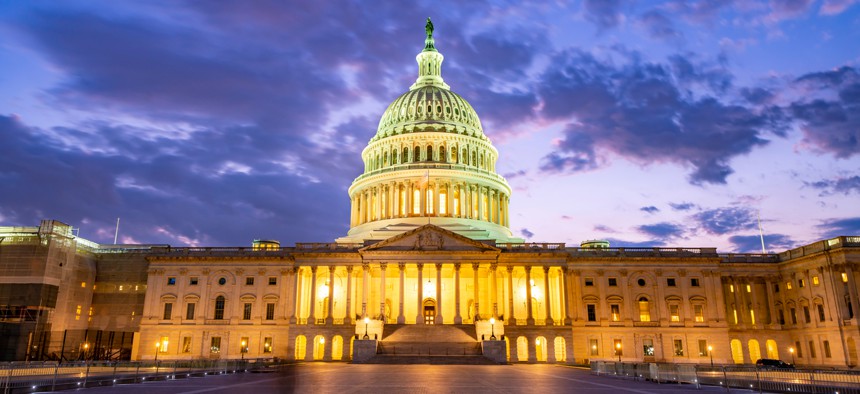
Shutterstock.com
House Passes Bipartisan Bill to Boost Agencies’ Spending Transparency
Lawmakers of both parties resoundingly support measures to more clearly show the public how agencies spend taxpayer money.
The House overwhelmingly passed a bipartisan bill on Monday evening that would require agencies to make spending more transparent.
The House voted 402-1 to clear the “Congressional Budget Justification Transparency Act,” which would amend a 2006 law to increase the public’s access to federal agencies’ congressional budget requests by putting them on various federal websites (Rep. Andy Biggs, R-Ariz., was the only lawmaker to vote against the bill). There is a companion version in the Senate, which the Homeland Security and Governmental Affairs Committee reported favorably to the full chamber on March 2.
“A bipartisan cohort of lawmakers expressed a clear, strong sense that the time has come for our government to improve how information from the budget formulation process is communicated to the American people,” Nick Hart, CEO of Data Coalition, a trade group that works to make government information more accurate and accessible, told Government Executive, on Tuesday.
“Agency congressional justification documents contain a wealth of data about agency performance and priorities; this information must be readily accessible as open, machine-readable data to ensure the process for negotiating the federal government’s $4 trillion budget is transparent for the public,” Hart said.
If enacted, the bill would require all federal agencies to post their congressional budget justifications on their websites. The Office of Management and Budget would need to establish a public website to house all links to budget justifications and the Treasury Department would be obligated to post the agencies’ budget documents on USAspending.gov.
Presently, OMB only requires executive branch agencies to publish their congressional budget justifications online, and its website posts information just from the White House. “The lack of a designated and structured database to access congressional budget justification reports makes it difficult to determine where a particular budget justification for a particular year may be located,” said a Senate committee report on the bill. “USAspending.gov currently hosts some agencies' congressional budget justifications, but the collection is not exhaustive.”
“It is absolutely critical that Congress and the public, more broadly, have access to this kind of information,” Dylan Hedtler-Gaudette, policy analyst at the watchdog group the Project on Government Oversight, told Government Executive on Tuesday. “We do have a huge problem whereby when Congress appropriates money and it goes to the executive branch there’s a lot of opacity and confusion and secrecy around how exactly the money is being distributed, how it’s being spent, [and] what, for example, OMB is doing with the apportionment process, what happens when things are being transferred across appropriations or re-programmed.”
He added that, “transparency, particularly around the use of public resources and taxpayer dollars, really shouldn’t be a partisan issue,” so it’s “a really good sign” that this bill is bipartisan. While there is always tension between the executive branch and Congress, the Trump administration has been “exacerbating it and taking it to a new extreme,” as shown by the delay in funding to Ukraine last year (that led to the president’s impeachment in the House) and Puerto Rico earlier this year, Hedtler-Gaudette stated.
The Congressional Budget Office estimated in February that implementing the bill would cost less than $500,000 between 2020 and 2025 to cover administrative expenses. Also, any changes to agencies’ direct spending would be “negligible.”







